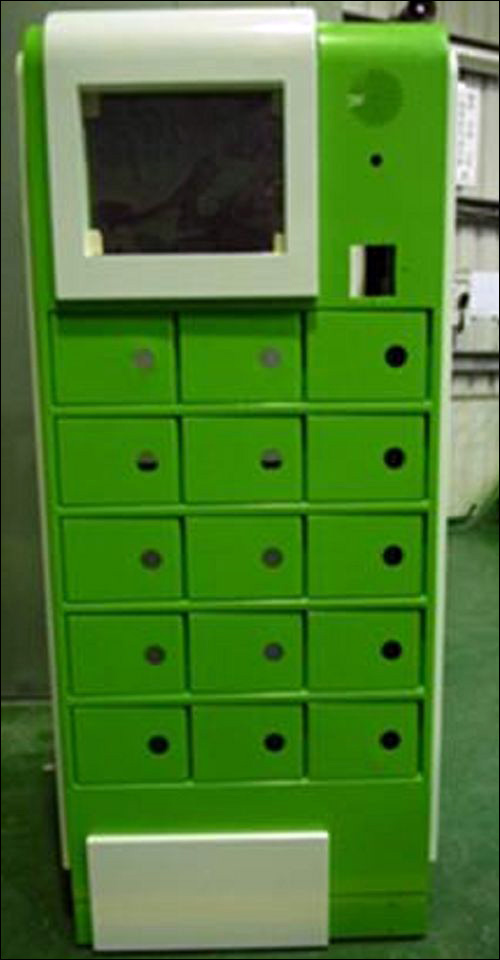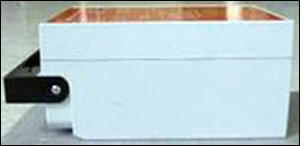Electric vehicle manufacturer KentFa Advanced Technology has installed 60 battery-exchange stations in Taiwan, with the goal of encouraging the use of electric scooters rather than gas-powered models. The stations, which employ radio frequency identification technology, enable scooter operators to exchange their depleted batteries for others fully charged.
Scooters and motorcycles are the predominant mode of transportation in Taiwan, according to the country’s Ministry of Transportation & Communications, with 13.5 million currently in use on the island nation’s roads. This amounts to 375 scooters or motorcycles per square kilometer, most located within densely populated cities. Currently, the ministry reports, only approximately 122,500 scooters are electric.

To reduce the amount of air pollution generated by gasoline-powered vehicles, the Taiwan Environmental Protection Administration (EPA) launched a program last year to provide battery-exchange stations in the streets of Taiwan’s cities, initially in the industrial town of Kaohsiung, and then expanding to Taipei. Without the exchange stations, those driving battery-powered scooters generally must recharge their vehicles’ batteries at home, which is time-consuming and impractical for workers with long commutes who may need to recharge the batteries before leaving their workplace at the end of a shift. While Taiwan maintains more than 8,000 battery-recharging stations, using them is often inconvenient since scooter drivers must drop off their bike batteries at a recharging station and then retrieve them several hours later, says T.H. Liu, the director of EPC Solutions Taiwan, which provided consulting support for the KentFa project.
The Taiwan EPA speculated that it would be more convenient to simply replace a spent battery with a fully charged one, for a fee, at public locations throughout the cities in which the majority of traffic occurs.
The Taiwan EPA hired KentFa Advanced Technology to develop the recharging stations, which employ ultrahigh-frequency (UHF) and high-frequency (HF) RFID technology to track which batteries are exchanged and by whom, without manned assistance. The stations themselves were built with the help of Sysgration, a Taiwanese company that provided the racks that hold the batteries, as well as the mechanical and electronic technology that enables a battery’s charge to be measured, and that opens and closes the doors of the compartments in which the batteries are stored. EPC Solutions Taiwan provided consulting services related to RFID’s use in tracking which batteries were at which area of the machine, based on the ID numbers encoded to the batteries’ tags, and the linking of those IDs with data regarding the batteries on KentFa’s software, residing onsite at the station.
The station operates similarly to a vending machine, with each machine storing 15 batteries. KentFa has attached an EPC Gen 2 UHF RFID tag made with an Alien Technology Higgs-3 chip to each battery that it stores in the machines, though in the future, it intends to request that all battery manufacturers tag the batteries before providing them to KentFa. KentFa’s software stores information about each battery, including its serial number, maintenance record, manufacturer and amperage, as well as the number of times it has been recharged and at which charger this took place. It also stores data regarding the scooter operators participating in the program, including the ID on the card each individual is issued. The station comes equipped with two RFID readers: an Alien Technology ALR 9650 UHF model to read the batteries’ tags, and a 13.56 MHz HF reader to interrogate tags embedded in the ID cards. The HF tags and reader were provided by EasyCard Corp.. More 30 million EasyCard payment cards have been issued in Taiwan to date, and are used to pay for bus and train rides, in addition to other transport-related services.
To sign up, a user pays an initial fee, after which he or she is provided with a full battery at one of the stations. The operator must also provide an EasyCard payment card, to which the company can bill that individual each time that a battery is exchanged.
Thereafter, upon arriving at the station with a spent battery, a user first presents his or her EasyCard payment card to the HF reader at the front of the station. The card’s ID number is forwarded to software residing on a computer built into the machine, which receives the ID and links it to data in order to verify that the user is valid. Once validity has been verified, the door of an empty compartment automatically slides open.
The user can then place the battery in the compartment, at which time the UHF reader captures the battery’s ID and confirms it against data related to that particular battery. If it has already been recharged the maximum number times, the battery will not be accepted. In that case, the user is directed to a separate location to acquire a new battery. Otherwise, the station’s sensor system measures the amount of electric charge remaining in the battery, estimates the amount of time necessary to fully recharge it, and bills the user’s EasyCard card account accordingly.
Once the door of the compartment containing the fully charged battery slides open, the user can remove the battery and proceed to use it until the next recharge is required.
Some exchange stations automatically recharge the spent batteries onsite, and then dispense those recharged batteries to subsequent customers. At other stations, KentFa’s staff must periodically retrieve the discharged batteries and take them to be recharged, before returning them for use by other customers.
The greatest challenge facing the use of RFID was the highly metallic environment, says Gary Huang, KentFa’s VP. KentFa found reads to be unreliable in the presence of the batteries using traditional patch or dipole reader antennas. Therefore, the firm developed a near-field antenna that is fitted into each rack, with a cable running through a slot to each battery storage area that connects the antenna to the reader.
There are 60 battery-exchange stations throughout Taipei and Kaohsiung. To date, Liu reports, the stations have proven popular since they provide immediate replacement of a fully charged battery. By the end of 2014, the company intends to have installed an additional 500 such stations.


